Growing Guide: All You Need To Know

Learning how to grow weed from seed to flower shouldn’t be hard. All you need is exact and concise information. Luckily, here at Herbies, you’ll find articles on every important topic, and this post will help you navigate them.
To grow weed from seed to flower successfully, the first step is to choose seeds and decide on a cultivation method – either outdoors, or indoors. We’ll cover both options. We’ll also show you what to equip a grow tent with, what lights, soil mix, and nutrients to buy, and help you learn all the techniques you need to grow weed day by day like a pro.
1/4
Getting Ready To Grow
There are many things to consider before you get started. We’ll try to be as concise as possible, and whenever you want more in-depth information on a certain topic, you can simply click the link in the text.
Choosing A Seed
From a grower’s perspective, the two main types of weed seeds you can choose between are autoflowering and non-autoflowering (photoperiod).
- Autoflowers don’t depend on light schedules. Outdoors, you can grow them in 2-3 months in any warm season (spring, summer, or fall). Indoors, you can set your timer to any ratio of day to night hours (e.g. 18/6, 20/4, 24/0).
- Photoperiod plants (photos) only start flowering when the days and nights are of equal length. Outdoors, this happens in the fall, and indoors, you’ll have to manually switch your timer to 12/12 after several weeks of growth.
Photoperiod plants are often called feminized, but this is misleading. The difference between feminized and regular seeds is that the former will always grow into females (with smokable buds), while the latter will have a roughly 50-50 chance of turning into either a male or female (males can be used for producing your own seeds or for breeding purposes).
Please also note the difference between Indica, Sativa, and hybrid varieties.
- Indica strains are shorter, faster, and more tolerant of the cold. When smoked, they create a warm, couch-locking buzz in the body and are great for promoting relaxation and sleep.
- Sativa strains grow taller and bushier. They take longer to flower and produce mentally stimulating effects, with lots of physical energy and creativity.
- Hybrids fall somewhere in between the above two strain types growth-wise, and their effects tend to start in the head and end in the body.
Growing Indoors Vs. Outdoors
If you decide to grow weed outdoors, make sure your climate is warm and sunny enough and that the variety you choose will finish before the autumn cold and rains. When in doubt, grow autoflowers.
You’ll need to water your plants in times of drought and provide support/trellising for buds in late flower. The rest is optional, which makes outdoor growing fairly easy.
Indoor cultivation requires that you carefully plan and set up your grow op, maintain the needed conditions from seed to flower, and provide everything plants need to thrive.
Grow Lights
Don’t be cheap when choosing a light. It must be marked as a ‘grow light’, meaning it’s powerful enough and gives off the right spectrum.
- LED quantum boards are the most up-to-date solution. They are energy-efficient, cool-running, and ensure the best gram per watt yield.
- HPS/MH used to be the only serious option, and some commercial greenhouses install them to this day. They are cheaper to buy but more expensive to run. Also, be prepared to extract a lot of heat generated by them.
- CFL & T5 (and similar fluorescent lights) are only good for micro-grows or for seedlings/clones, i.e. when the light requirements aren’t so great.
A light should draw approximately 30-80 ‘real’ watts per square foot (330-860w/m2). An LED should provide the same amount in ‘HPS equivalent’ – a term used by LED manufacturers.
Soil Mixes And Pot Types & Sizes
Although a newbie can grow weed in coco or hydro, a soil mix is the safer option for first-time growers.
Three to five-gallon containers are enough for a medium to large-size autoflower or for a photoperiod plant that you don’t keep in the vegetative stage too long. Your best choice is a grow bag (with breathable walls) or an airpot.
You can use regular potting soil, but make it loose and airy with perlite/vermiculite. Alternatively, you can invest in a more advanced soil specifically designed for cannabis. Yet another option is to mix your own organic super soil – this will allow you to grow weed from seed to flower without using any extra nutrients.
2/4
Watering And Nutrients
Watering is the single most important aspect of marijuana cultivation and the first thing you need to master.
Cannabis roots love oxygen and hate being overwatered. So, learn to water generously but not too often, with long enough dry periods to let the root system breathe. If you’re using inorganic fertilizers, don’t forget to water to a 20% runoff to reduce the build-up of salts.
Giving cannabis extra nutrients is optional outdoors and in super soil, but in most other cases, you’ll have to regularly ‘fertigate’ your plants (feed nutrients with water).
Today, many producers offer amazing lines of cannabis-specific fertilizers, both organic and synthetic. These are your best bet.
However, if all you can find is some generic formula at your local garden center, make sure it has all three essential elements – nitrogen (N), phosphorus (P), and potassium (K) – and that you give your marijuana more N in veg and more P-K in flower. Microelements are also important, and their deficiency can lead to various issues, so make sure your fertilizer contains these as well.
Plants will promptly ‘tell’ you about deficiencies by displaying different symptoms on leaves. You can diagnose other issues, such as light burn, heat stress, and pest attacks, in the same way.
3/4
Growing Weed From Seed to Flower: What You’ll Go Through
Cannabis seeds germinate easily when the environment is moist, warm, and dark. There are several proven germination methods that guarantee great results, but the most popular of these is keeping your seeds between wet paper towels and putting them in soil as soon as they pop and show a taproot.
Seedling Stage
Seedlings spend most of their energy on developing a healthy root structure, while the growth above ground is rather slow. Your goal now is to provide enough but not too much light, steer clear of nutrients for the moment, and avoid overwatering.
The most common issue is stretching due to inadequate light, so learn how to deal with this. Also, make sure to keep the environment warm (26-28°C/78-82°F) and moist (60-80% RH).
Vegetative Stage
Sometime after two weeks, the growth of the young plant will accelerate, marking the beginning of the vegetative stage. This is when a healthy cultivar virtually ‘explodes’, and it’s now time to introduce nutrients with a lot of nitrogen in them.
The standard light schedule for veg is 18/6, but some growers use 20/4 or even 24/0, especially for autoflowers.
When you’ve decided that your bush is big enough for your needs – some 50% of the projected final size – it’s time to switch to 12/12 to induce flowering. However, with autoflowers, this is not necessary, as they’ll start flowering on their own.
A word about transplanting: You can plant your cannabis straight into the final pot (the best thing to do with autoflowers) or use starter pots, such as solo cups, and then repot. In any case, make sure to do the final transplanting at least a week or two before flowering.
Cannabis Training
Training starts early in veg and extends well into early flowering. The goal is to create an even canopy where every plant top is the same distance from the light and receives the same amount of energy. It also ensures that the lowest bud sites aren’t too far away and don’t grow tiny and weightless.
An indoor gardener can use an impressive array of low-stress and high-stress training methods. Low-stress training (LST) involves simple bending and tying down branches. Its ultimate form is ScrOG (Screen of Green), when you install a net to direct all the growth horizontally.
HST usually means cutting off the top shoot. Its two main techniques are topping and fimming, both of which stimulate side growth and make canopy management easier. Three consecutive toppings on the same plant (with the removal of some extra shoots and leaves) will allow you to get eight identical colas, and this is called mainlining.
A special kind of canopy management is SOG (Sea of Green). The plants aren’t trained at all, but grown in many small one or two-gallon pots side by side. This makes for an even canopy, and the plants’ limited height ensures that light penetrates all the way down.
Flowering Stage
Within a week of 12/12, you’ll see the first signs of flowers. Don’t forget to check if they’re male or female, and cull the males immediately if you don’t need them. Also, switch to nutrients that are rich in P and K.
The flowering stage lasts 8-10 weeks on average (although much less for autoflowers), and is the time when buds form and bulk up. You’ll see your colas become ‘frosty’ with trichomes. These tiny THC-rich glands, when inspected under a hand microscope, are the most reliable indicator of the best time to harvest your cannabis.
When you see that the trichomes have gotten milky, it’s time to flush the soil of excess nutrients, thereby cleansing the buds.
Drying And Curing
Harvested buds must be slowly dried and cured the right way to ensure that they produce the best possible smoke. One week of drying and 2-3 weeks of curing are enough to get rid of the ‘hay’ taste, bring a complex flavor to the foreground, and make a world of difference potency-wise.
4/4
Product Use
We assume you know what to do with the final product, but probably not everything.
Besides many ways of smoking weed, you can learn to make some mind-blowing things like edibles using cannabutter and cannabis concentrates, including extracts in alcohol.
To Grow Weed From Seed To Flower Is Easy
As you can now see, it’s not rocket science.
So, don’t waste any time! Buy your first batch of seeds and start to get everything ready while waiting for them to arrive. Some cramming wouldn’t hurt either, because the more you learn, the less unpleasant surprises you’ll have. But don’t worry too much – you’ll be able to address most questions and issues as you go. Plus, our blog is always there and covers every question that may arise along your growing journey.
Herbies Head Shop expressly refuses to support the use, production, or supply of illegal substances. For more details read our Legal Disclaimer.

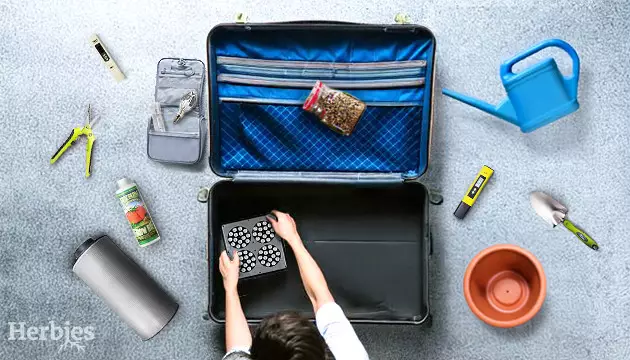
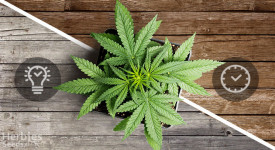


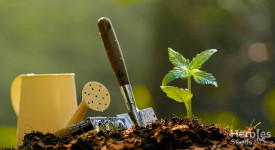
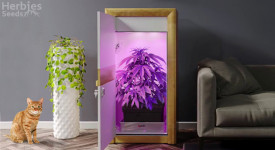
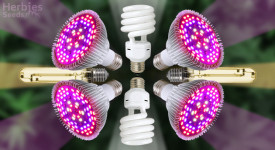

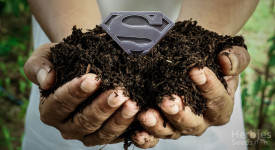
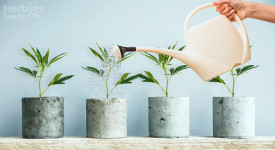
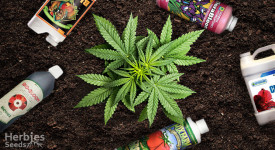
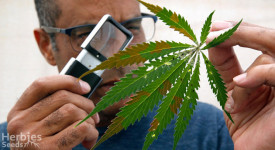
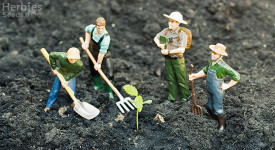
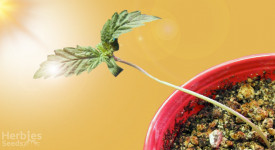



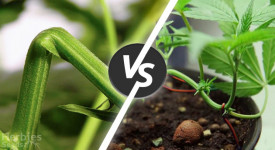
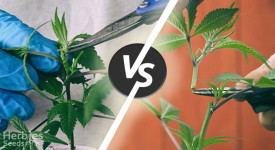

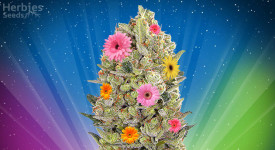
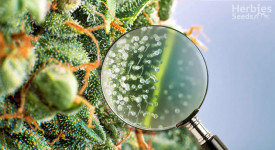

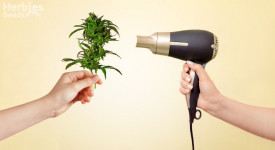

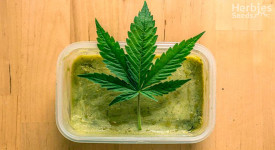


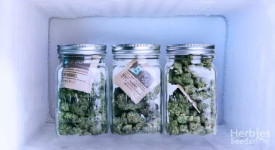


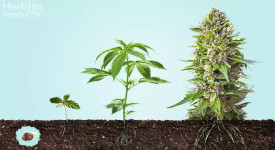

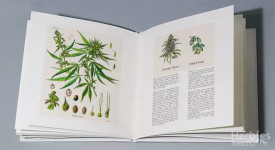

Thank you for leaving a comment for us!
Your feedback will be posted shortly after our moderator checks it.
Please note that we don’t publish reviews that: